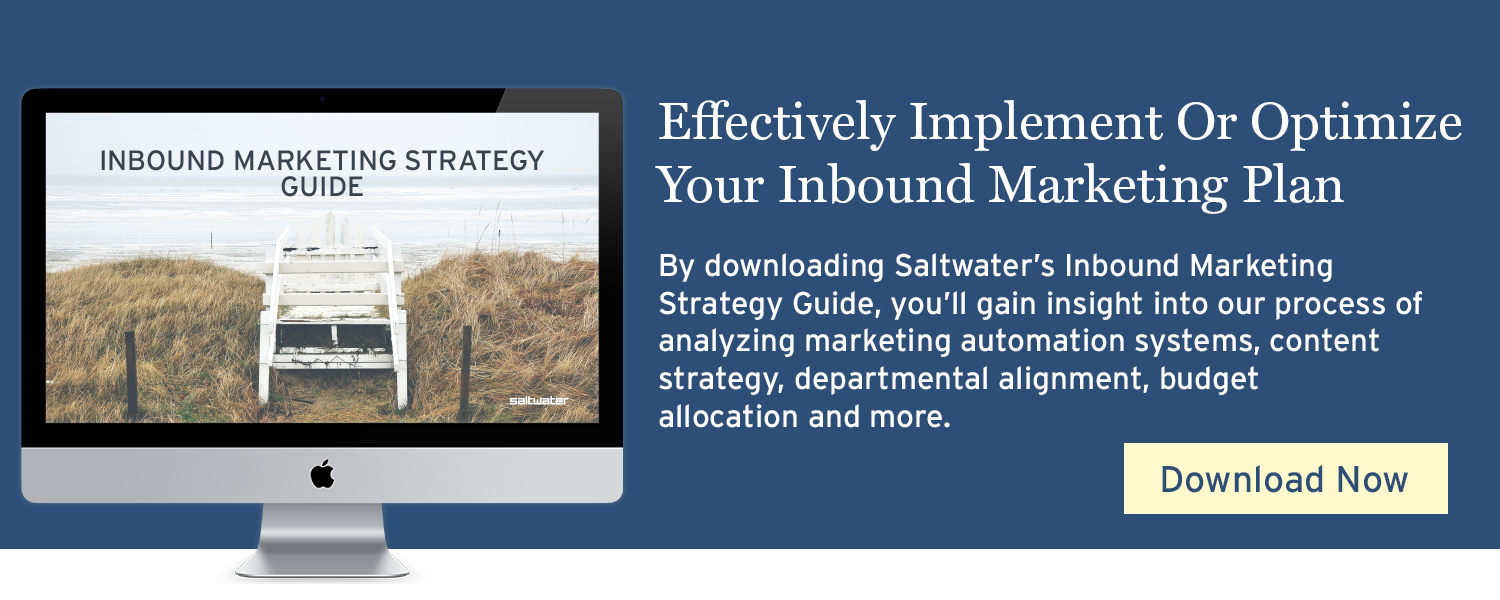WHAT MARKETING AUTOMATION IS NOT
Tell us if you’ve heard this one before: An organization needs to do inbound marketing, so they choose a marketing automation platform (MAP) and install it. Ready to go, right? Wrong. Marketing automation services are important for executing your inbound marketing strategy, but it isn’t, in itself, inbound marketing — it’s just the start.
Let’s go back in time to traditional marketing. It was effective and, truth be told, still is in the right scenario. It was also disruptive. And that’s part of the beauty of an automation platform; it does all the dirty work and does it efficiently. Organizations can use an automation platform to continue these disruptive techniques. Just purchase a list of emails specific to your product offering, load the list into your MAP, draft an email about your product, and click send. Voila! All of these contacts (who may or may not be familiar with your brand) have now just received your promotional email. Imagine you were the recipient. What is your first move? I’m guessing it’s to hit delete or mark the email as SPAM. Bye, bye lead.
Is the above example marketing automation? Yes. You automated the delivery process of your list purchase emails. Is it inbound marketing? No. Why?
Inbound marketing focuses on creating quality and targeted content to attract people to your company. By creating content that aligns with your customers’ interests, you attract inbound traffic to your website that you can then convert and close.

Today’s customer wants to be informed, educated, and entertained. They don’t want to be sold to. Inbound marketing allows you to provide your potential customers with educational information important to them via a multitude of channels. The end-goal is having your brand at the top of your customer’s mind when they finally make the decision to buy.
Marketing automation is a necessary part of your overall inbound strategy. Because inbound focuses heavily on content creation, you will need a lot of content. You’ll have to provide your inbound customers with blogs, social posts, white papers, webinars, eBooks, videos, etc. Your time should be focused on creating this content. Marketing automation allows you to streamline the delivery of this content to your prospective customers.
HERE’S ANOTHER SCENARIO FOR YOU
You’re an organization selling workout attire. Your end-goal is selling your product. Instead of spraying the market with promotional ads, you decide to start a weekly workout post. Each week, you post the workout to your blog and share as sponsored posts on social media. You’ve also partnered with some influential online personalities to do these workouts on their YouTube channel. A potential buyer sees this and starts following your posts. Now you’ve decided to host a webinar with let’s say, Michael Jordan. The potential buyer who follows your workout post now signs up for this webinar because honestly, who wouldn’t take advice from the greatest basketball player of all time and one of the world’s most successful marketers? You now have their contact information and can begin tracking their activity on your website via your MAP. Based on a set of lead-scoring rules you’ve created, your MAP sees this prospect spends a lot of time on your site—so much so that they might be ready to buy.
Maybe they’ve had multiple visits to a page for pieces of Jordan’s signature apparel line you sell. Your marketing automation fires off an email with a few more specifics around the shirt. Your prospective buyer reads this because, as we already know, they are interested in the product. A week later, our prospective buyer decides they need to purchase a new workout shirt. They find that email you sent them (which they just so happened to keep at the top of their inbox), return to your site, and purchase an athletic shirt.
Not once in the above scenario did you outright sell to your customer. You never had to because you’ve supplied them with enough information and enjoyable content that you remained top-of-mind when it came time to buy. This is inbound marketing.
Your marketing automation took care of tracking the prospects activity on your site, delivering the the social posts to Facebook, Twitter, and Instagram, and delivering the promotional email when your prospect reached a high enough lead score to prompt doing so. All this allowed you to focus on spending your time creating the content for social, working with your brand influencers, creating the workout, and strategizing the educational email your customer received. This is marketing automation.
Inbound marketing is where the industry has headed. We can’t sell directly to our customers anymore—it just won’t work. We need to provide them with enough targeted content to carry them through the buying journey. Spend your time creating this content and let your MAP do the work of delivering it.
Tagged in:
Back
